Francis Bacon: The Tragic Artist
Painter of violence and sadism, of flesh and blood, Francis Bacon is also known as a painter of life. His works, known for their flayed tones and dark imagery, are highly valued and among the most expensive in the world.
Francis Bacon was born in Dublin in 1909. Rejected by his father because of his homosexuality, he went to London in 1926, then moved for a short time to Berlin and Paris before returning to London in 1928. Bacon later claimed that it was seeing an exhibition of Picasso at the Rosenberg Gallery while in Paris that inspired him to start painting.
Upon returning to London, Bacon rented a studio in which to work. His work was heavily influenced by Old Masters, such as Velazquez, Michelangelo, and Rembrandt, though he also employed aspects of cubism and surrealism in his work. In 1934, Bacon organized a presentation at the Transition Gallery, which was heavily criticized by the public; in 1936, his work was then rejected from the International Surrealist Exhibition. Due to his resulting feelings of dejection, he destroyed many of his paintings and no finished works of his exist from the years 1937 to 1941.
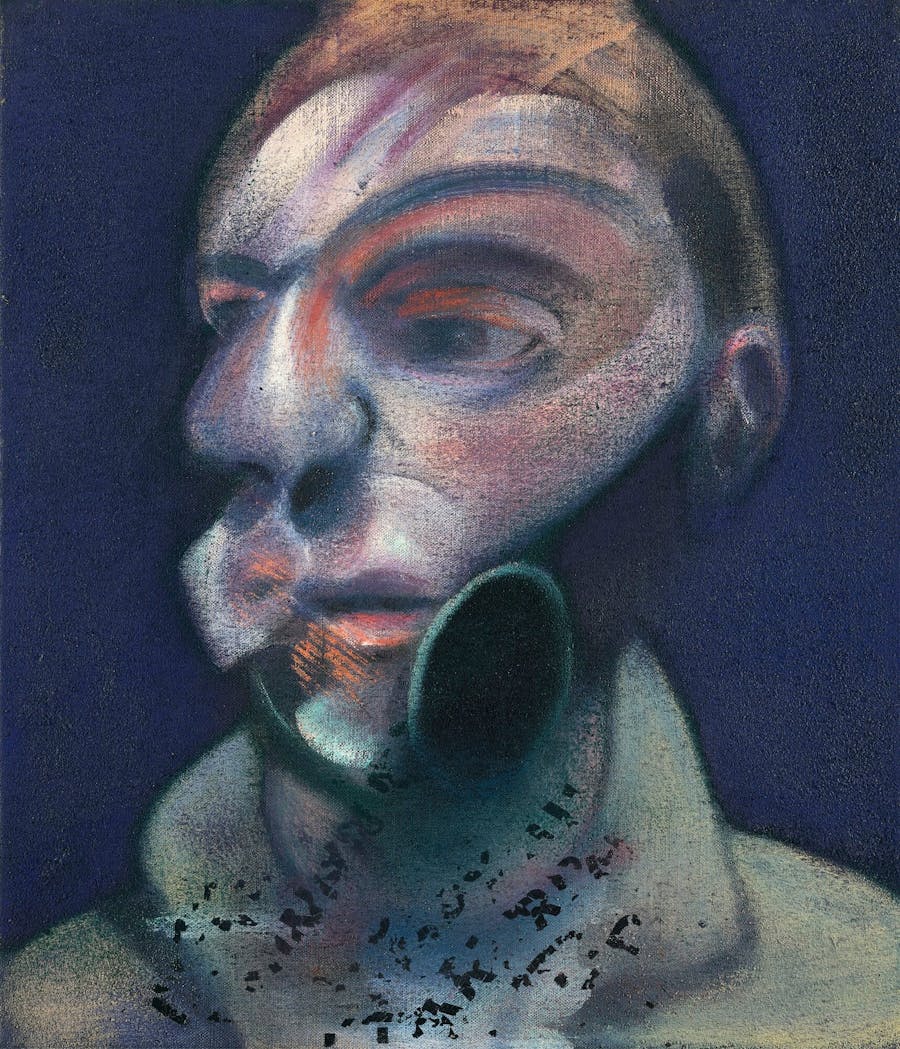
In 1945, Bacon’s first highly influential work Three Studies of Figures at the Foot of a Crucifixion (1944) caused a scandal at the Lefevre Gallery in Paris. The disturbing imagery shocked the public during the final days and subsequent end of the Second World War. The trauma of this time is visible in the gnarled, tortured bodies which resemble dead, only vaguely human figures. Bacon became known for his startling, violent approach to depicting the flesh and form of living things. Gilles Deleuze remarks in his book on Francis Bacon about how he paints heads and not faces. Regardless, this marked a positive turning point in the painter’s artistic career.
See also: Obsessive Love: Francis Bacon and Peter Lacy
Shortly after selling Painting, 1946, Bacon used the proceeds to set off to Monte Carlo where he drank and gambled compulsively, often producing little profit. The persistent darkness of his paintings that resulted was unprecedented. In 1949 he began painting a series of popes after Velazquez which he would continue to rework for over twenty years. The resulting depiction of Pope Innocent X is one of undeniable horror and existential agony.
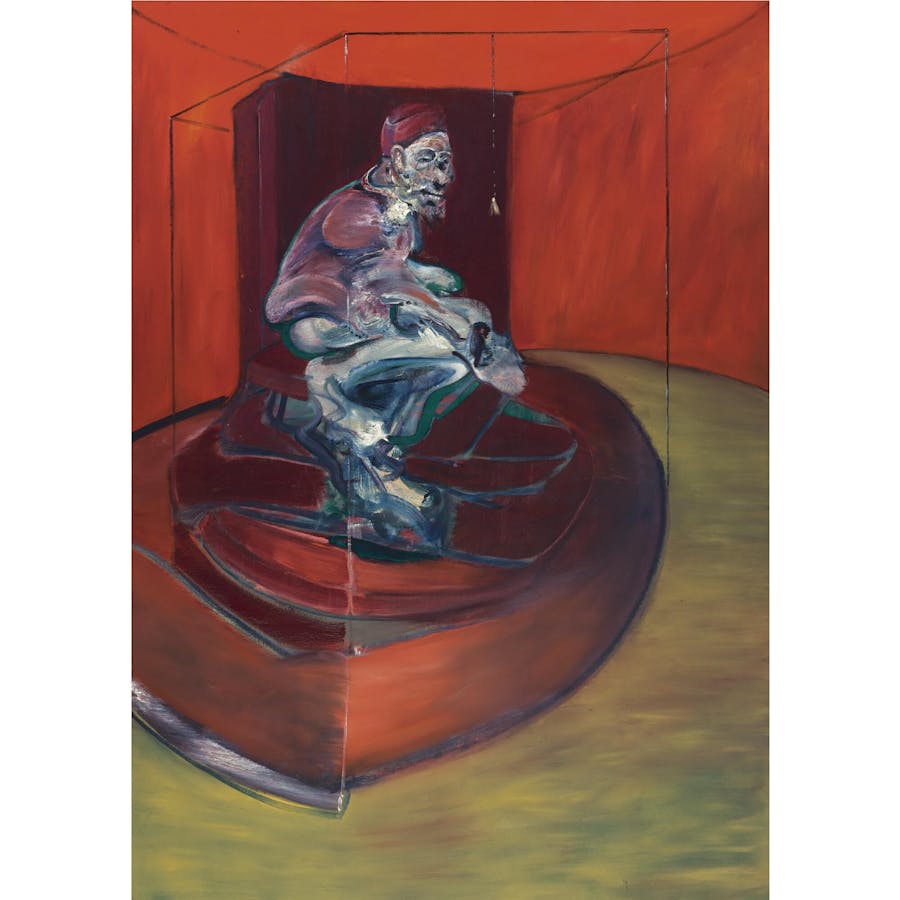
At the turn of the 1950s, Bacon met fellow artist Lucian Freud, with whom he started a close but volatile relationship with that lasted three decades. The two spent so much time together that Freud’s wife commented on how she saw Bacon at dinner almost every night. Their mutual scrutiny and harsh criticism of each other’s work resulted in many extraordinary pieces during their friendship. Numerous portraits and self-portraits of the two exist from this time depicting the extended pictorial evolution of each respective artist.
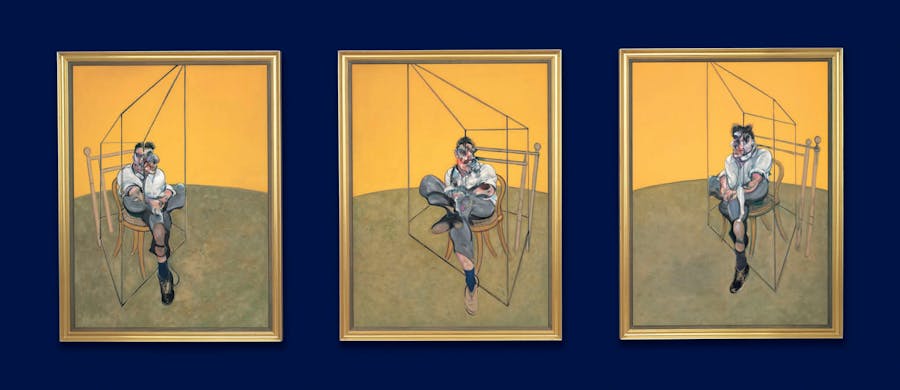
Bacon certainly did not deprive himself of pleasure and freedom during his lifetime. Inspired by Edward Muybridge’s depiction of movement in photography, Bacon represented himself in full copulation with his lover, Peter Lacy, in Picture of Two Fighters. The scene illustrates his life of sex, violence and heavy alcoholism; he suffers from his experiences but he openly enjoys it.
In 1961, the artist moved to 7 Reece Mews in London, which he transformed into a haphazard amalgamation of thousands of brushes, canvases, magazines and other art supplies. To explain this he said, “Chaos suggests images to me“. Certainly, a theme of chaos is evident throughout Bacon’s body of work.
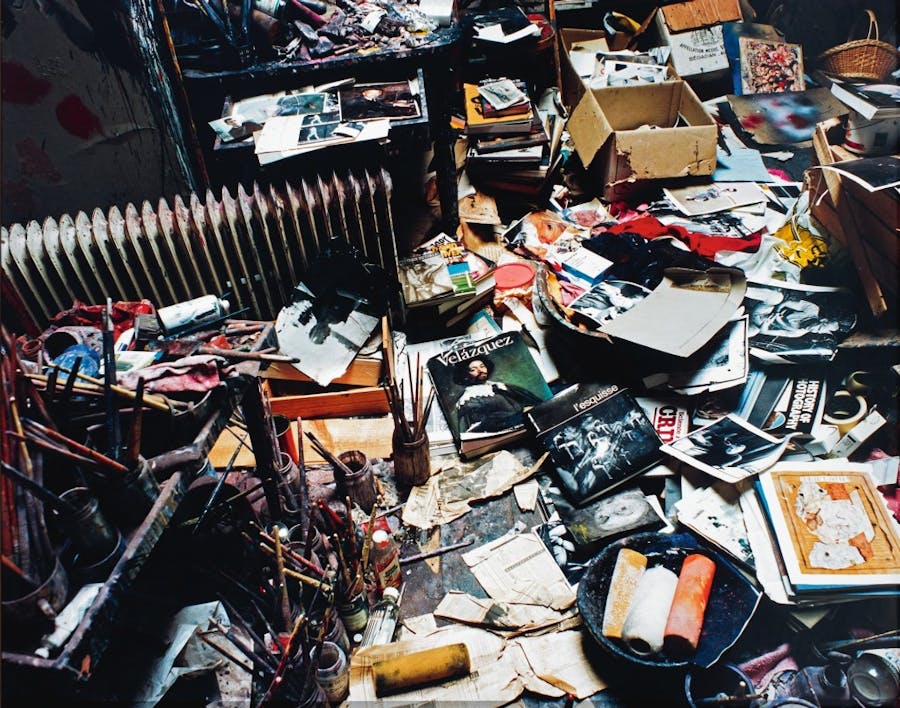
Bacon's success as an artist was increasing. Nevertheless, he was falling deep into debt due to his gambling tendencies. To combat this, he signed with the Marlborough Gallery, which promised him a salary and an exhibition at the Tate Gallery, which took place in 1962. On the day of the opening, however, Bacon received news that his lover Peter Lacy had died due to alcohol-related circumstances the night prior.
In 1971, a similar tragedy occurred during the opening day of his retrospective organized at the Grand Palais, in which Bacon was informed that his lover George Dyer had been found dead on the toilet in the pair’s hotel room after having taken an overdose of barbiturates. This fact was hidden during the event so as not to jeopardize its success and thus Bacon’s career. He later painted Triptych, May-June 1973, which depicts George Dyer’s death and the painter’s own feelings of loss and regret.
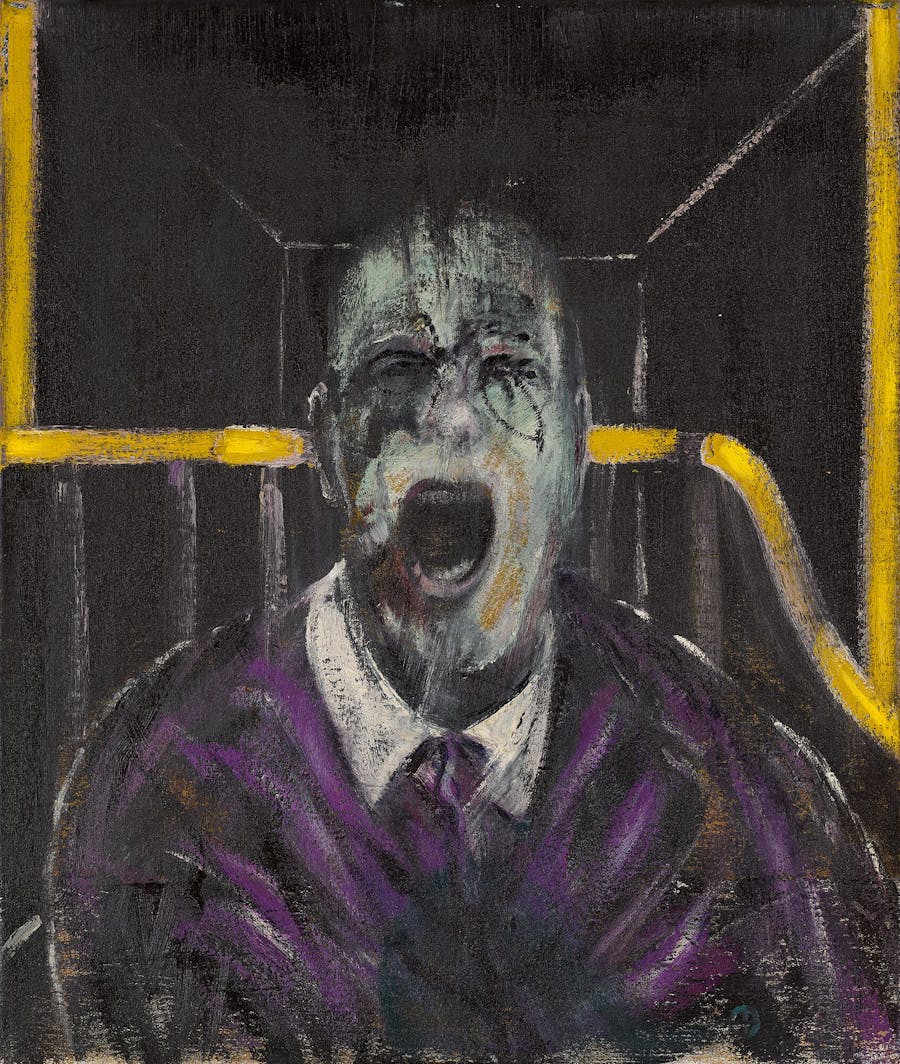
By the end of his life, Bacon was famous in the art and contemporary world. The artist died of a heart attack while on holiday in Madrid in 1992, leaving behind a raw, true body of work that was reflective of how he lived. His emblematic triptychs are highly sought after on the market. In 2013, Three Studies of Lucian Freud (1969) sold for $142.4 million at Christie’s New York, making it the most expensive work ever sold at the time.


